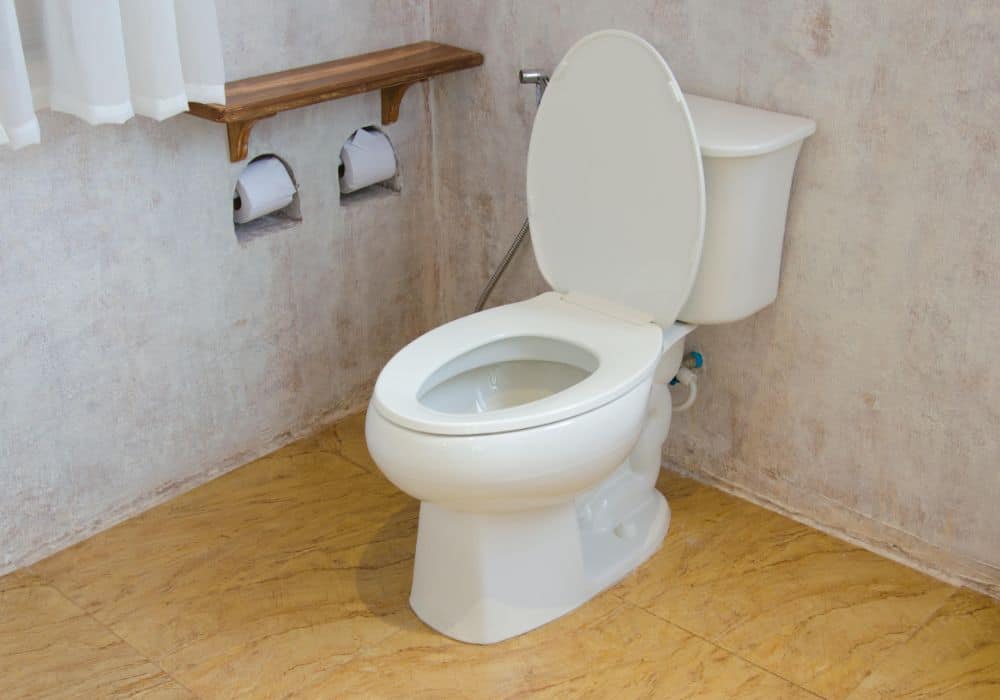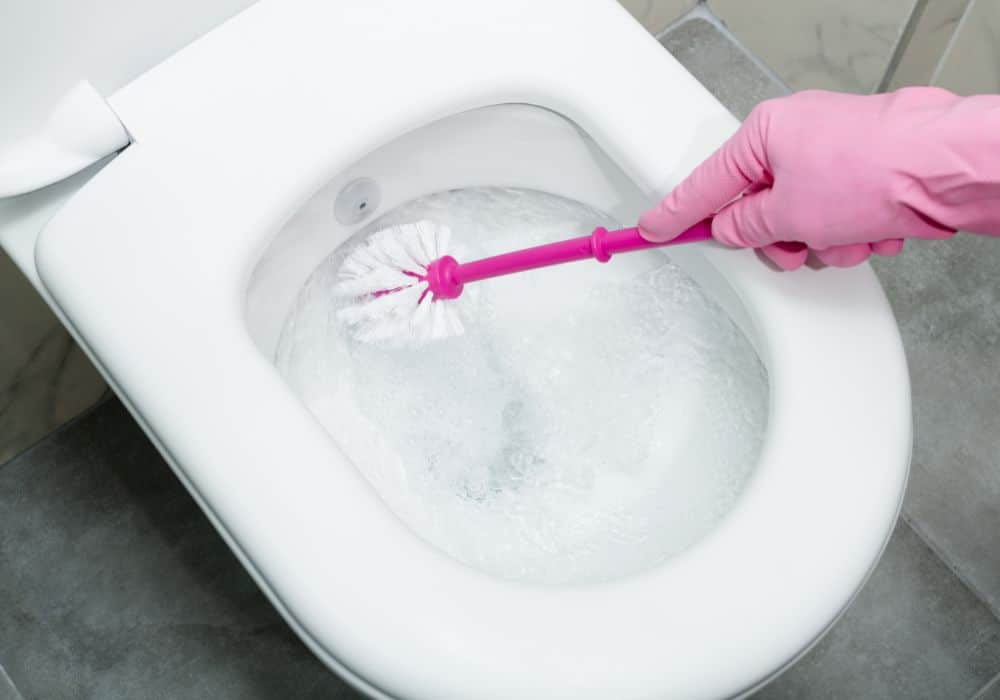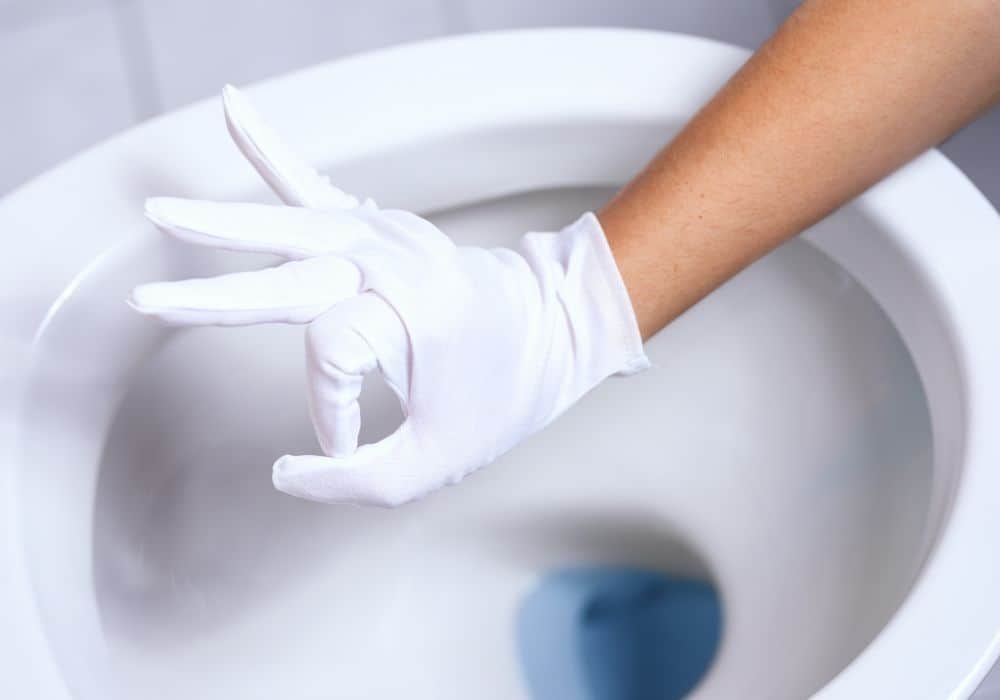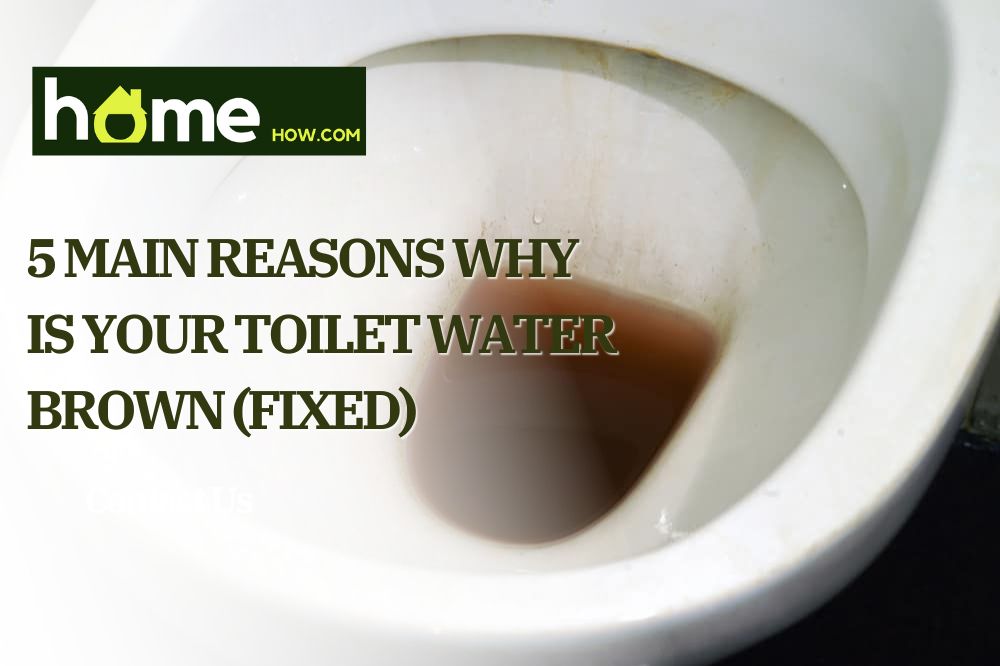Brown water coming from your toilet can be an unsettling experience. You may be wondering what is happening and what you should do about it.
In this blog post, we will provide information on why your toilet water might be brown and how to address the issue. Stay calm and read on for some helpful tips.
What Causes Toilet Water To Turn Brown?
There are many reasons why your toilet water may have brown discoloration. In fact, this is a pretty common issue. So, what’s behind this discoloration, and how can you fix it?
Here are the most common reasons for brown toilet water.
1. Rusted Pipes
Rusty pipes can be a major cause of discolored toilet water. When water flows through the rusted areas of the pipe, it can pick up and carry tiny metal particles into the toilet.
These metal particles can then settle into the water and cause it to turn brown or yellowish in color. Additionally, rusted pipes may allow contaminants to build up in the water, which can also contribute to discoloration.
Therefore, if you notice that your toilet water has turned brown or yellow, it is essential to address any potential issues with your pipes.
How to fix: This might include replacing old or damaged pipes or flushing the pipes with white vinegar or lemon juice and salt to remove the rust. Rust can be a severe problem in the plumbing system of your home or business.
Over time, rust builds up and can lead to corroded pipes, eventually leading to leaks and other issues.
One of the best ways to prevent this from happening is by taking steps to mitigate the effects of corrosive elements on your pipes.
This can include using chemical additives to help prevent corrosion and scheduling regular inspections from checking for signs of damage.
Alternatively, you can switch to PVC pipes to avoid this issue altogether. By taking these measures, you can help keep your pipes safe from rust and ensure that they continue to operate smoothly for years to come.
2. Your Water Isn’t Flushing Completely

One common problem that many homeowners run into is a toilet that won’t flush completely and causes the water to become brown. When this happens, there is likely waste that has seeped back into the bowl due to clogs in the plumbing system.
This can be very unpleasant and even unsanitary, as it can make you more susceptible to germs and bacteria. To remedy this issue, you will need to determine where the blockage is and remove it in order to restore normal water flow in your toilet.
You may need to call in a professional plumber for help if you are unable to identify the source of your clogged drain or broken seal on your own.
Ultimately, taking care of this problem quickly and thoroughly is key for protecting your health and keeping everything running smoothly in your home.
How to fix: A few key steps can be taken to help prevent a clogged toilet and keep the drains clear and flowing smoothly. The first step is to avoid flushing baby wipes, sanitary products, or condoms. These items are often made from materials that do not break down easily and can quickly get stuck in the drain, leading to a clog.
Another vital tactic for avoiding a clog is to use only toilet paper specifically designed for use in toilets rather than cheaper alternatives. Low-quality toilet paper may not disintegrate as easily when flushed, which can lead to blockages and backups over time.
To further reduce your risk of clogs, it is also important to be mindful about what you flush down the toilet.
Potentially hazardous substances like medications, chemicals, or paint should never be disposed of this way; instead, they should be taken to special disposal centers or simply thrown in the trash.
By following these simple tips and making a few small changes to your habits, you can effectively prevent clogged toilets and enjoy consistent drain flow in your home.
3. Damaged Well
If your toilet water appears to be brown, then there is a possibility that your damaged well is to blame.
Well, water can become contaminated with sediments, dirt, and other materials due to various factors, including harsh weather conditions or landscaping work in the area.
In addition, stormwater runoff from uphill storms may contain contaminated soil that washes into the well during heavy rainfall, further exacerbating any existing issues.
To address such a problem, it is important to seek the advice of a professional who can help diagnose the underlying cause of the contaminated well and take steps to correct it.
Whether you need to dig new wells or simply improve water filtration systems, the key is to identify what has caused you’re damaged well in order to address it effectively. Only by taking such measures can you restore clean water back into your home’s plumbing system for safe use.
How to fix: There are a few key steps that you can take to help prevent your water well from becoming contaminated and unfit for drinking. The first and most important thing is to make sure that your well is properly located and installed.
Your well should be safely removed from any potential sources of contamination, such as manure piles or septic systems. It’s also important to safeguard your well with a locking cover or hatch, which will keep animals and other hazards out.
You should also regularly monitor your water quality and get regular routine maintenance checks on your system, in order to catch any potential issues early on.
With these simple measures, you can help ensure that your water well stays clean, healthy, and safe for years to come.
4. Rusted Toilet Components

Rust is a common problem in toilet tanks, as the metal components of toilet system fixtures are prone to oxidation and corrosion over time.
When rust forms on a toilet, it can interfere with the normal water flow, resulting in discoloration of toilet water. This water will typically turn brown or yellow, depending on the severity of the rust buildup.
Additionally, rusted components can also cause leaks and clogs if they become worn down or damaged by the corrosive effects of rust.
If you have noticed corrosion or rust in your toilet tank’s components, there are a few things you can do to address this issue.
How to fix: The first step is to determine whether the rust is localized or if it has spread throughout the tank.
If the corrosion is only affecting certain parts of the tank, such as in a small area on one side, then you may be able to simply clean these areas and apply a protective coating such as varnish or paint.
However, if rusting has occurred throughout most of the tank and its components, it is likely that malfunctioning valves and seals are causing this problem. In this case, repairing or replacing these components may be necessary to restore proper function to your toilet.
Ultimately, the best way to address rusted toilet components will depend on your particular situation and the extent of the damage.
With proper care and attention, however, it should be possible to keep your toilet running smoothly for many years to come.
5. Hard Water Mineral Buildup
If you regularly notice brown water inside your toilet bowl, it could be due to hard water mineral buildup. Hard water contains high levels of minerals like magnesium, calcium, and iron that can build up over time inside your pipes and fixtures.
As these hard water minerals gradually collect on the surfaces of your toilet and other bathroom fixtures, they can create a dark-colored coating that can lead to discoloration in your toilet water.
How to fix: To prevent this problem and keep your toilet clean, it is important to have your hard water checked periodically. This can help you determine if there are any mineral deposits in your system.
There are several different methods you can use to fix hard water buildups, such as water softeners, water filtration systems, or descaling agents.
One of the most effective and simple options is to install a water softener in your home. This device will remove many of the minerals from the water, preventing them from building up in your pipes. Additionally, water softeners also help to reduce soap scum and other residue in sinks and showers, making cleaning much easier.
What Causes Toilet Pipes To Rust?

Toilet pipes can rust for a number of different reasons. One of the primary causes is the chemical reaction between iron, oxygen, and water that results in iron oxide.
This process, known as rusting, occurs when iron comes into contact with water or other liquids that contain oxygen.
The reaction produces iron oxide, which then builds up on the inside of the pipe, gradually weakening its structure and leading to leaks and clogs.
Another factor that can contribute to the development of rust is exposure to high levels of humidity, which creates ideal conditions for iron oxide to form and spread.
Ultimately, maintenance of your toilet pipes requires not only cleaning out drains consistently but also ensuring adequate ventilation in humid environments.
Doing so can help prevent potentially serious damage to these critical household utilities.
Conclusion
Now that we’ve explored some of the potential causes, have you been able to pinpoint the source of your toilet troubles?
We hope this article was helpful and that you feel a bit more confident in diagnosing and solving your own plumbing issues.
If not, or if you still have questions, don’t hesitate to reach out in the comments – we love helping our readers out! And finally, always remember to practice safe DIY when it comes to fixing things around the house.
